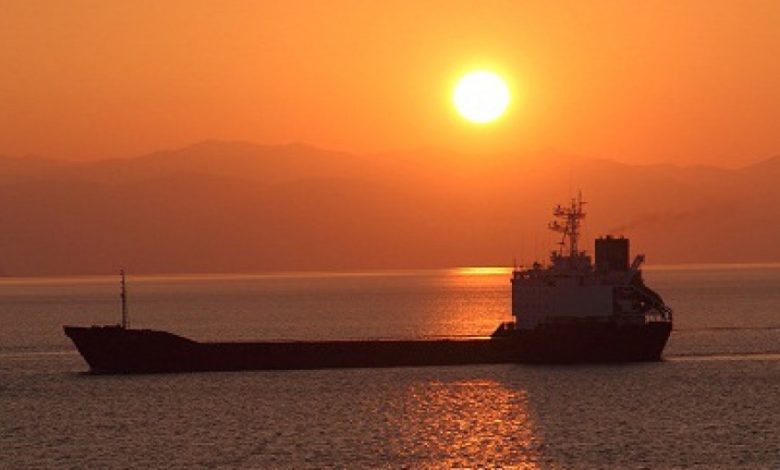At least $1trn of capital investment in land-based and ship-related infrastructure will be required to halve international shipping’s greenhouse gas emissions by 2050 compared to 2008 levels, as per the mandate of the International Maritime Organization (IMO).
A new study by UMAS and the Energy Transitions Commission for the Getting to Zero Coalition has put a dollar figure on the challenge that lies ahead for shipping over the next three decades.
Depending on the production method, the cumulative investment needed between 2030 and 2050 to halve shipping’s emissions amounts to approximately $1-1.trn, or an average of $50bn to $70bn annually for 20 years. If shipping is to fully decarbonise by 2050, this will require further investments of some $400bn over 20 years, bringing the total to $1.4trn to $1.9trn.
“We need to understand the scale of the challenge to solve it. Shipping’s shift to zero carbon energy sources calls for significant infrastructure investments. The investment needed should be seen in the context of global investments in energy, which in 2018 amounted to $1.85trn. This illustrates that shipping’s green transition is considerable, but certainly within reach if the right policy measures are put in place,” said Johannah Christensen, managing director at the Global Maritime Forum, a partner of the Getting to Zero Coalition.
“Energy infrastructure and ships are long-life capital-intensive assets that normally evolve slowly. In the next three decades however, our analysis suggests we will see a disruptive and rapid change to align to a new zero carbon system, with fossil fuel aligned assets becoming obsolete or needing significant modification. Even though regulatory drivers of this system change such as carbon pricing are only starting to be debated, the economic viability of today’s investments and even the returns on recent investments will be challenged, and the sooner this is factored in to strategies and plans, the better,” said Dr Tristan Smith, reader at the UCL Energy Institute and one of the author’s of today’s report.
The biggest share of investments is needed in the land-based infrastructure and production facilities for low carbon fuels, which make up around 87% of the total. This includes investments in the production of low carbon fuels, and the land-based storage and bunkering infrastructure needed for their supply.
Only 13% of the investments needed are related to the ships themselves. These investments include the machinery and onboard storage required for a ship to run on low carbon fuels in newbuilds and, in some cases, for retrofits. Ship-related investments also include investments in improving energy efficiency, which are estimated to grow due to the higher cost of low carbon fuels compared to traditional marine fuels.
The estimates of investment needed come from the UMAS shipping model GloTraM. The model simulates decisions from a shipowner’s perspective to identify the fuel, technology and operation combinations that maximise their profits and therefore identifies the likely pathways for the sector’s evolution under a combination of macroeconomic and policy drivers. The model includes a detailed representation of the different ship types within the global fleet, and the production pathways, their capital and operating costs, for a range of potential low and zero carbon fuels. From this, the investment implications for fleet and land-side infrastructure of the model-identified likely pathway are then obtained.
“Sustainable investing is here to stay. We foresee that there will be a great appetite for investments in sustainable infrastructure projects that help reduce greenhouse gas emissions,“ said Michael Parker, chairman of global shipping logistics and offshore at Citi.
“Much of shipping’s decarbonisation will take place on land. It is a systemic transformation that goes beyond the capabilities of the maritime industry alone. We need to bring together the full range of upstream and downstream fuels value chains to unlock shipping’s shift to zero carbon energy sources. Done right, this represents a trillion-dollar market opportunity,” commented Lord Adair Turner, chair of the Energy Transitions Commission.
At the Global Maritime Forum’s annual summit last year, maritime leaders proposed a global carbon levy to accelerate shipping’s decarbonisation through investments in technology and design of new propulsion systems, alternative fuels, and scaling and infrastructure to deliver these fuels – while taking into consideration the impact on trade and developing states.
The starting level for a carbon levy should be $10 per ton CO2, and $50-$75 per ton CO2 around 2030. A price of $10 per ton CO2 would correspond to an annual fund of $8bn. A price of $75 per ton CO2 would correspond to an annual fund of $70bn.
Speaking with Splash today, Smith from UCL said of the big trillion dollar headline figure: “I don’t think this needs to be a shock. Our latest estimates are that a zero GHG fuel might be around $800 per ton – HFO equivalent prices – in the 2030s, which is around the level of historical highs of HFO prices. If the transition of fleet and infrastructure is well managed and any /price experienced evenly, then our estimates – and that of many others- are that globally the impact on trade and demand would be negligible.”






